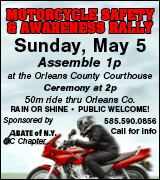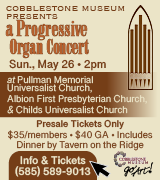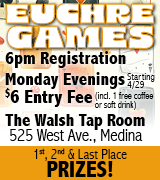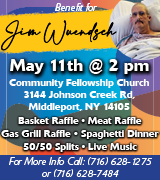Carlton students from 1926 included recent immigrants from England
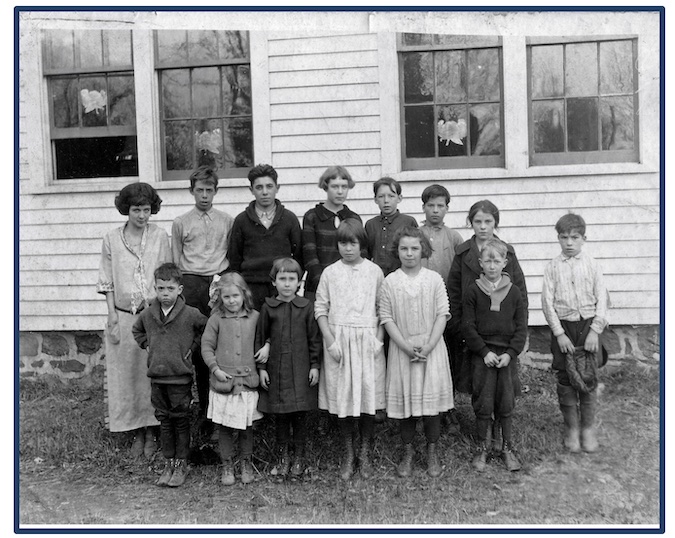
Pictured at the Carlton School in the Town of Carlton in 1926 include, front row, from left: Gordon Callard, Ellen Gibson, Loraine Whittier, Gertrude Donnelly, Clara Rice, Arthur Gibson and Frank Morrow. Back row: Teacher – Helen McGinn, and students Charles London, Fred Forder, Elaine Scarborough, ? Scarborough, Fred Flowers and Catherine Morrow. (Photo from the collection of Clara Rice Friday)
By Catherine Cooper, Orleans County Historian
Illuminating Orleans, Vol. 4, No. 10
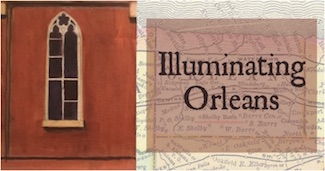 CARLTON – Such a variety of expressions and body language in this one photograph! Young Gordon Callard, with his hands on his hips, was clearly not happy at that moment. Standing next to him, a shyly smiling Ellen Gibson companionably linked arms with her friend while Frank Morrow stood apart from the group.
CARLTON – Such a variety of expressions and body language in this one photograph! Young Gordon Callard, with his hands on his hips, was clearly not happy at that moment. Standing next to him, a shyly smiling Ellen Gibson companionably linked arms with her friend while Frank Morrow stood apart from the group.
We can tell that the photograph was taken in the winter as the children were wearing sweaters, high socks, and lace-up boots. The boys wore knickers, as those loose-fitting trousers gathered at the knee were called.
The three white blobs in the windows behind the group pinpoint the time of year more specifically. When enlarged, they turn out to be turkeys! We deduce that the photograph was taken shortly before Thanksgiving in 1926.
A search through the 1930 Census yielded some intriguing information about the backgrounds of these young students and also about Carlton’s immigration patterns.
Of the thirteen students photographed, two were born in England.
The Forder family of five immigrated from Norfolk, England in 1912. Fred Forder was then aged 3.
Fred Flowers’ father left Wisbech, Cambridgeshire and travelled on the Lusitania, and arrived on July 13, 1911. Fred, then an infant, travelled with his mother, Gertrude and three older siblings, and arrived on November 4, 1911.
Three students were children of recent English immigrants. Charles London’s father arrived in 1905. Arthur and Ellen Gibson’s parents immigrated from East Ruston, Norfolk in 1911.
Five students (Frank and Catherine Morrow, Loraine Whittier, and the Scarborough siblings) were of English descent.
When referring to Orleans County’s immigrant population, we immediately think of German, Irish, Italian and Polish people. However, a significant number of English immigrants also moved here. This group tends to be overlooked, possibly because they blended seamlessly as they did not have language barriers to overcome.
A quick survey of the 1930 Town of Carlton Census showed the following numbers of English immigrants:
1840-1900: 21
1900-1910: 28
1911-1920: 28
1920-1930: 5
Many of those who moved to Orleans County were from Norfolk.
Ironically, just one student fits the traditional immigrant profile. Clara Rice’s grandparents were officially German but were of Polish descent. Like a lot of Polish immigrants, they had come to Albion in the 1890s to work in the sandstone quarries. At the time this photograph was taken, Clara’s parents were sharecroppers in Carlton, saving to accumulate money to purchase their own farmland. The family later purchased their own dairy farm at the end of Oak Orchard Street in Albion.
The majority of the students remained in the area.
Gordon Callard served in the US Army from 1942-1945. He saw action in the Philippines and Okinawa and was awarded the Bronze Star Medal and the Purple Heart. He was an employee of the Orleans County Highway Department and later served as Highway Superintendent for the Town of Carlton.
Arthur Gibson also served in the US Army from 1942-1945. He was part of the D-Day invasion of Europe. Upon his return, he continued farming and also worked for US Gypsum in Oakfield for 25 years.
Charles London and Ellen Gibson married in 1934 and lived in Carlton.
Miss Helen MacGinn, the bashful looking teacher, then aged 25, was from Gaines. She pursued a life-long career as a public-school teacher in New York State.
This class photograph was recently donated to the Orleans County Dept. of History by the family of Clara Rice Friday. Thankfully, Clara, shown standing in the front row, provided the names of her classmates.
The Dept. of History collection contains Board Meeting minute books from several rural school districts as well as class photographs. Donations of these unique items are always welcome.














